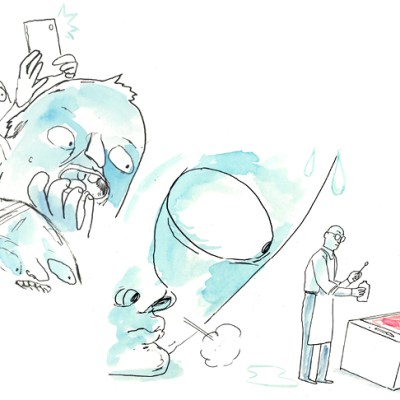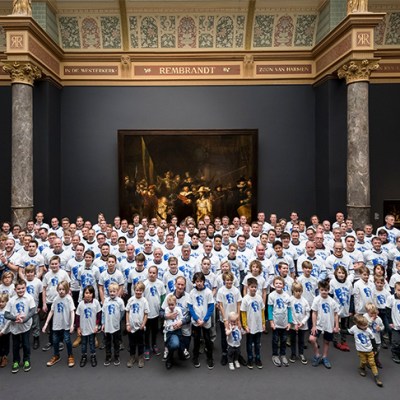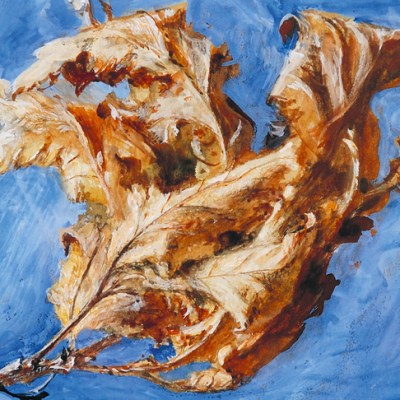Taco Dibbits talks to Thomas Marks about the Rijksmuseum’s year-long celebration of Rembrandt, and why he is encouraging audiences to make connections between the artist’s life and work
The 350th anniversary of Rembrandt’s death is an opportune time to draw further attention to an artist who is already one of the Rijksmuseum’s greatest draws. How did you set about devising something a bit different?
Rembrandt is a kind of national hero, besides being a great international painter. His anniversaries have always been very important in Holland: 1956 was a major anniversary year, and there was a large Rembrandt exhibition in 1969. In 2006, the Rijksmuseum was being renovated so we didn’t have much space to organise anything, other than the ‘Rembrandt–Caravaggio’ exhibition that was held in the Van Gogh Museum. This is really the first big anniversary for Rembrandt in his museum, the Rijksmuseum, since its renovation.
We felt that we should show what we have. The Rijksmuseum has the most comprehensive collection of Rembrandts in the world, from his only still life and one of his few landscape paintings to the largest group portrait, The Night Watch – his most famous painting – as well as 60 drawings and 300 prints. We’re showing all the Rembrandts of the Rijksmuseum together [until 10 June], probably for the only time in this generation – the works on paper are so fragile that you can’t display them too often.
What will visitors gain by seeing them together?
It will feel like a walk through Rembrandt’s life. My main wish for the ‘Year of Rembrandt’ is that people will get to know Rembrandt better – the artist and his art. During the 20th century there was very much an idea that if you wanted to study art seriously you shouldn’t look at the life of the artist; it was considered a Romantic idea to have the artist, throughout his life, making works that reflect his life.
With Rembrandt, it’s time to reunite the art and life. No artist made so many self-portraits, and he’s also the first artist who started to depict the world around him. I sometimes call him the first Instagrammer because that’s what he does – he makes images of himself, he makes images of his family, of his friends, he goes into the streets and he walks through the countryside around Amsterdam. When he depicts scenes from the Bible and from classical history, he relates them to everyday life, and so gives daily life a timeless dimension. The strength of this exhibition is that visitors will get to know Rembrandt’s world.
Landscape with a Stone Bridge (c. 1638), Rembrandt van Rijn. Rijksmuseum, Amsterdam

So Rembrandt represents himself, and projects himself and the people around him into historical or religious scenes. Have you also learnt things about Rembrandt from fictional representations, such as Peter Greenaway’s film Nightwatching (2007)?
I don’t think anything touches what it feels like to walk through Rembrandt’s art. Having said that, I’ve just finished reading the biography that Jonathan Bikker has written for the Year of Rembrandt, which I think is absolutely brilliant – he really links the man to his art without succumbing to Romantic ideas. It’s the first biography anybody has ever dared to write in the Rijksmuseum and it’s a fantastic read. Jonathan writes about Rembrandt as a rebel who doesn’t stick to the rules of art, who depicts fat women with cellulite and saggy breasts. He talks about how, for Rembrandt, cellulite was a playground for light and shadow, which is a very positive idea.
You’ve worked at the Rijksmuseum since 2002. After all those years, does Rembrandt’s art still surprise you?
There’s never a dull moment with Rembrandt. He’s just enormously original: every painting, every etching, every drawing is an adventure, and that’s why he changed the course of art history. He understood his history, and played with his predecessors who he knew through Renaissance prints. But he also critiqued them: he didn’t travel to Italy and strive for the greatest beauty, he broke the rules of art.
Self-Portrait, Frowning: Bust (1630), Rembrandt van Rijn. Rijksmuseum, Amsterdam

It can get very crowded in the Gallery of Honour at the Rijksmuseum,
where some of the most well-known Rembrandts are hung. What can you
do to ensure that every visitor gets to spent some quality time, as it were,
with Rembrandt?
That’s always possible, I think, because there’s so much Rembrandt in the Rijksmuseum: there are around 400 works in ‘All the Rembrandts’ so everybody will be able to see the works by themselves. And it’s fortunate that his most ambitious painting, The Night Watch, is so big. It was painted for a room that was meant to host many people, and because the figures are life-size, your experience of the work is undisturbed when there are lots of people in the gallery. It’s a public painting for a public space.
Jeremiah Lamenting the Destruction of Jerusalem (1630), Rembrandt van Rijn. Rijksmuseum, Amsterdam

Could you pick out a couple of works by Rembrandt that don’t usually get a lot of attention from visitors, but which this exhibition will encourage them to look at more closely?
Among the paintings, there’s the fantastic Jeremiah Lamenting the Destruction of Jerusalem. I think it’s one of his most moving paintings, a meditation on old age and solitude. People haven’t always revered The Landscape with a Stone Bridge, which shows a beautiful type of scene that you encounter if you walk through the Dutch countryside, with its dark skies as if rain is about to fall – but then Rembrandt puts in kind of a monumental bridge, which must be a fantasy.
It’s really the prints that tend to get overlooked, though – there are so many of them. But they have such directness and expressiveness, and the Rijksmuseum’s holdings include many of the greatest impressions. Seeing them together will be a feast for the eyes.
The museum was quite late to collecting Rembrandt, acquiring its first painting only in 1900. Why did it lag behind other European collections in this regard?
This is a country of merchants, so art was also seen as something that you could sell. Rembrandt was immediately very popular, and his works were sold abroad. Some of his most important paintings were always in the country: The Night Watch and The Syndics, and then in the Mauritshuis The Anatomy Lesson of Dr Nicolaes Tulp. In the 19th century some attempts were made to acquire more paintings but the Netherlands had very little money at the time. With the first acquisition, Landscape with a Stone Bridge, there was suddenly this realisation of just how many of Rembrandt’s masterpieces were abroad; the state began to buy some fantastic works and later some private owners donated others, for example the great late self-portrait showing Rembrandt as the apostle Paul and the beautiful tronie of Saskia. The museum only opened in the late 19th century, and it was always a national place to which both the state and Dutch citizens contributed.
Self Portrait as the Apostle Paul (1661), Rembrandt van Rijn. Rijksmuseum, Amsterdam

The museum recently announced that The Night Watch would undergo restoration this year. Why does it need that attention now?
We’ve been monitoring the painting daily over the years, and noticed that a whitish haze has appeared on its lower part over the last 10 years. On top of that, the retouchings that were made in the 1970s, when the painting was last restored, have started to discolour – so the damage is now much more visible from when the painting was attacked by a madman with a knife. We want to find out what that white haze is and do the retouching again in a way that’s much more precise.
The restoration is taking place in public. Are there risks involved in public conservation programmes? And does the public really get a better understanding of such work by watching it through a glass wall?
The first and most important thing is the painting itself. Before you conserve it you need to do very thorough research and make a risk assessment. For us the lowest risk in this project is its public aspect. It’s a large painting, so we need to minimise movement: no taking it off the wall, getting it into a truck, transporting it to our conservation labs. Secondly, when you take a picture like this off public view, there’s huge pressure on the conservators to finish their work because visitors want to see it again. I don’t want to put that pressure on the conservators. The other aspect of this is that the painting is world heritage: it belongs to the public, it doesn’t belong to us, and I think they have the right to know what’s happening to it.
Later in the year, the museum is staging ‘Rembrandt–Velázquez’ [11 October–20 January 2020]. Besides the accident of history – that their dates almost coincide – what do these artists have in common?
Realism. Velázquez and Rembrandt strived to depict the truth, and I think that makes them the two greatest portrait painters of all time. The show will also include works by Vermeer, Ribera, Zurbarán and others – all painters who were preoccupied with realism, and all of whom tackled religion in different ways. There were very few Spanish paintings in the Netherlands at the time, or Dutch paintings in Spain – Flemish painters, yes, but not Dutch. And yet it was the golden age of painting. I’ve always wanted to see The Little Street by Vermeer next to one of Velázquez’s small paintings of the garden at the Villa Medici – a seemingly unimportant subject, painted in a monumental way on a very small scale.
Of all the Rembrandts not held by the Rijksmuseum, which do you dream about having in the collection?
Not telling… I’ve never thought about the paintings in other museums that I would want to have. A Woman Bathing in a Stream at the National Gallery [in London] is absolutely amazing, and then there’s the Bathsheba in the Louvre. But there are too many, it would depend on my mood: there’s a different Rembrandt for every day of your life.
‘All the Rembrandts’, part of The Year of Rembrandt at the Rijksmuseum, Amsterdam, runs until 10 June.



